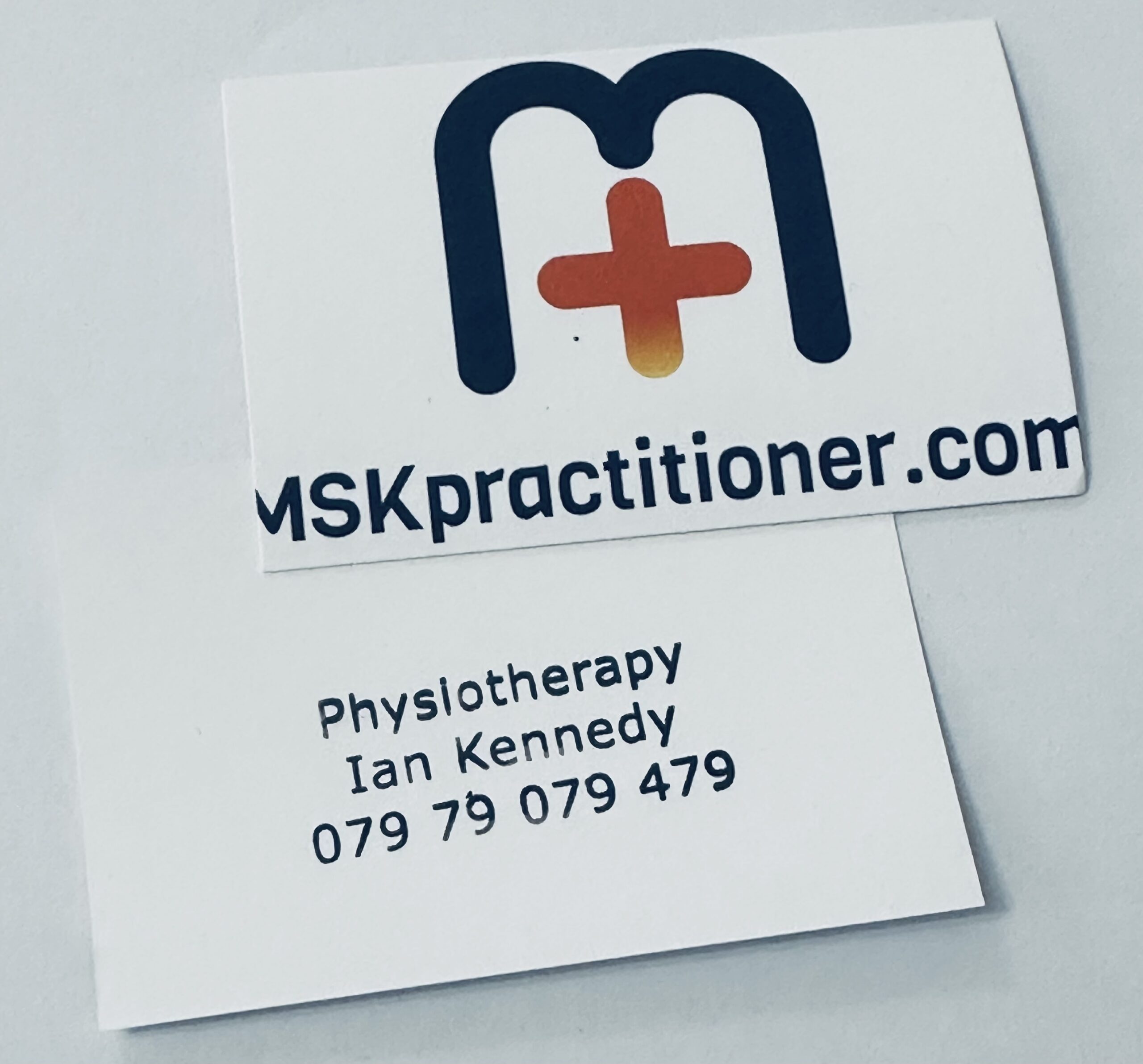How MSK practitioners (Physiotherapists) went from Supplementary to Independent prescribers
The Cumberlege report identified that health professionals were experiencing delays when waiting for doctors to sign prescriptions, the suggestion of non-medical prescribing was made (DHSS, 1986). The 1st crown report (DOH, 1989) termed this ‘Dependent prescribing’ and later it became knowns as ‘Supplementary prescribing’. In 1992 the first district nurses and health visitors began prescribing, albeit to a very limited formulary. A second crown report (DOH, 1999) gave rise to prescribing rights for nurses and pharmacists with extended formulary under the health and social care act (DOH, 2001), it allowed the supply and administration of medicines under a patient group direction or through a framework called a clinical management plan (DOH, 2003). Later the Medicines and Healthcare products Regulatory Agency (MHRA) undertook consultations and presented proposals to ministers on the Commission on Human Medicines (CHM). Decisions were made to allow nurses and pharmacists to ‘independently prescribe’ any licensed medicine for any medical condition, including some controlled drugs (DOH, 2006). In 2005 physiotherapists and other health professions joined the list of supplementary prescribers, and later the list of independent prescribers (CSP, 2013).
What’s the difference between and independent and supplementary prescriber?
Some of the more significant differences between the two prescribing types are the legal and inter-professional relationships in place to enable the patient access to medication that was previously accessible only via medical prescriber. Supplementary prescribing hinges on the formation of a voluntary prescribing tripartite partnership; the independent prescriber (IP), typically a medial prescriber i.e. Doctor, works with the specially trained supplementary prescribing (SP) health professional who is authorized to provide the care, and a patient who is aware of the partnership and agreed for their care to be managed in this way (DOH, 2003).
When managing a specific patients condition, perhaps with long term needs such as inflammatory arthritis, a Clinical Management Plan CMP can be developed from the medical evidence and clinical guidelines for said condition (Brookes and Smith, 2007). The doctor (medical IP) provides the initial assessment for the patient and the diagnosis, this tailors the patient’s suitability to the CMP. With the agreement of the patient, from this point forward, the SP’s are authorized to manage these patients within the agreed parameters of the CMP. This care might include regular reviews with prescribing, or continuing established treatments by issuing repeat prescriptions, with the authority to adjust the dose or dosage according to the patients’ needs (DOH, 2003).
What are clinical management plans?
What are patient group directives?
Another form of supplementary prescribing, set up in August 2000 is a Patient Group Direction (PGD); these are often multidisciplinary set of agreed written instructions collated by medical IP’s, pharmacists and health professionals, for the supply or administration of medicines within a protocol, for groups of patients who meet some set criteria, they are meant for a shorter term clinical application (see appendix CMP 1 Oramorph) (Brookes and Smith, 2007). A key difference to a CMP is that the patient may not be individually identified by name, before their presentation for treatment i.e. Hepatitis A or flu vaccinations (DOH, 2006). In both situations the medical IP will clearly need to take account of the professional relationship, as well as the experience and degree of expertise of the supplementary prescriber when coming to a decision on these CMP instructions (DOH, 2003). Typically, the health professionals are well known to the IPs and agreed directives are adopted in busy secondary care settings to improve efficiency i.e. Emergency or outpatient departments.
What is an independent prescriber?
In contrast to supplementary prescribing is independent prescribing; a non-medical professional who has completed a postgraduate course which meets the requirements of government legislation. They have a tested knowledge of pharmacology, giving them clinical reasoning skills which influence their practice beyond the SP, common examples include deciding when to recommend loading doses, or whether to send patients for blood tests and what levels should be monitored. The IP takes responsibility for the initial clinical assessment of the patient, they establish a diagnosis, and make decisions about the clinical management required and prescribe where necessary. A wholly autonomous practitioner, that can no longer dispense under CMP or PGD but adheres to a single competency framework (Royal Pharmaceutical Society, 2016). Independent prescribers (IP) can prescribe any drug with few controlled exceptions, but critically the IP is required to be aware of their limitations; consider working in a field such as musculoskeletal trauma, a practitioner’s regular formulary is condensed to suit their patient profiles, in the example of a MSK practitioner; NSAIDs, analgesia, neuropathic pain relief and a few others, this establishes that IP’s sphere of competence (NPC, 2010). If a situation requires consideration of patients taking medication outside of this sphere, the IP will call upon the British National Formulary and other reliable sources to assist their clinical reasoning to achieve safe prescribing practice. As accountability lies solely with the IP they may decide it is safest not to prescribe at all. Here a significant disparity is evident when considering SP’s who theoretically have no restrictions on the scope of clinical conditions they may treat, additionally they can dispense prescription only medicines (POMs), pharmacy (P) medication and general sale list (GSL), new drugs on clinical trial, ‘off-label’ drugs, ‘black triangle’ drugs, controlled drugs list schedule 2-5, all so long as they are within the remit of the CMP or PGD (DOH, 2002). Another variance lies within the reporting and monitoring of adverse drug reactions (ADR), here both the SP’s and IP’s have a duty to do so, perhaps using the yellow card system in the BNF, but in addition, the SP will also report ADRs to the medical IP named on the CMP, with whom they share accountability.
Complications have befallen both types of prescribing; the expectation that non-medical IPs were to provide a cost saving has become clouded, perhaps due to the initial financial cost of the course and the further training time endured to achieve IP status, then the realisation that further time is needed to get practitioners up to speed. Equally, some suggest that the implementation of supplementary prescribing had been time consuming particularly when agreeing CMPs with GPs, this was viewed as a big hindrance (Kinley, 2004) and perhaps explains why CMPs are not commonplace today. Some SPs claim to have experienced trouble when explaining the nature of supplementary prescribing to patients, conceivably due to its complexities. Despite these disadvantages Brookes and Smith (2007) highlight many advantages; both boast the improved accessibility to medicines via experienced and approachable practitioners. Patients like the IP nurse’s and allied health professional’s style of consultation, with adequate information provision on the diagnosis in a timely fashion, made accessible through more convenient treatment times with availability of care often opening into extended hours, offering better continuity for working patients. Patients like the idea of SP’s sharing in the decision-making process within the tripartite prescribing partnership because they have shown to reduce drug errors in complex cases. This also benefits the SP’s who enjoy the security, status and increased job satisfaction of prescribing under supervision. Equally, the IP’s ability to deliver a complete episode of care provides similar satisfaction but with the added benefit to medical colleagues who experience fewer interruptions asking to sign prescriptions.
What are the pros and cons of independent and supplementary prescribing?
Over the last thirty years legislation on the supply and administration of medication has evolved the job descriptions of nurse, pharmacist and allied health professionals, now fulfilling the proposals of the Cumberlege and Crown reports. It did this in two different ways, initially through supplementary prescribing with its vast scope and shared accountability, tempered by its reliance on prior medical diagnoses. Then onto independent prescribing with autonomous practice within a sphere of competence.
References
BNF, 2016. British National Formulary. BMJ Group, British Medical Association & Royal Pharmaceutical Society, London.
Brookes, D., Smith, A., 2007. Non-medical prescribing in health care practice: a toolkit for students and practitioners, 1st ed. Palgrave Macmillan, Basingstoke UK.
CSP, 2013. Chartered Society Physiotherapy independent prescribing gets legal green light [WWW Document]. The Chartered Society of Physiotherapy. URL http://www.csp.org.uk/frontline/article/physio-prescribing-gets-legal-green-light (accessed 1.4.18).
DHSS, 1986. Cumberlege report. Neighbourhood nursing: A focus for care. London, HMSO.
DOH, 2006. Medicines Matters. A guide to mechanisms for the prescribing, supply and administration of medicines. http://webarchive.nationalarchives.gov.uk/20150401165511/http://www.medicinesresources.nhs.uk/en/Communities/NHS/PGDs/ (accessed 11.30.17).
DOH, 2003. Supplementary prescribing by nurses and pharmacists within the NHS in England. A guide for implementation. http://webarchive.nationalarchives.gov.uk/20120504011216/http://www.dh.gov.uk/prod_consum_dh/groups/dh_digitalassets/@dh/@en/documents/digitalasset/dh_4068431.pdf (accessed 11.30.17).
DOH, 2002. Supplementary prescribing. London.
DOH, 2001. Patients get access to quicker medicines. (press release). Department of Health, London.
DOH, 1999. Department of Health – Supplementary Prescribing by Nurses, Pharmacists, Chiropodists/Podiatrists, Physiotherapists and Radiographers within the NHS in England: a guide for implementation. Crown report 2. London.
DOH, C.J., 1989. Report on the advisory group on nurse prescribing. Department of Health, London.
Kinley, J., 2004. Nurse prescribing in palliative care: putting training into practice. Nurse prescribing 2, 60–64.
NICE, 2018. Analgesia mild-to-moderate pain. Clinical Knowledge Summary [WWW Document]. URL https://cks.nice.org.uk/analgesia-mild-to-moderate-pain#!scenario:4 (accessed 10.25.17).
NICE, 2015. Non-steroidal anti-inflammatory drugs. Key therapeutic topic. NICE institute for health and care excellence. nice.org.uk/guidance/ktt13 [WWW Document]. URL https://www.nice.org.uk/guidance/ktt13/resources/nonsteroidal-antiinflammatory-drugs-pdf-58757951055301 (accessed 1.8.18).
NPC, 2010. National Prescribing Centre [WWW Document]. URL https://www.nice.org.uk/about/nice-communities/medicines-and-prescribing
Royal Pharmaceutical Society, 2016. Prescribing Competency Framework [WWW Document]. URL https://www.rpharms.com/resources/frameworks/prescribers-competency-framework (accessed 10.25.17).
WHO, 2018. World Health organisaion cancer pain ladder for adults. [WWW Document]. URL http://www.who.int/cancer/palliative/painladder/en/ (accessed 4.17.18).




